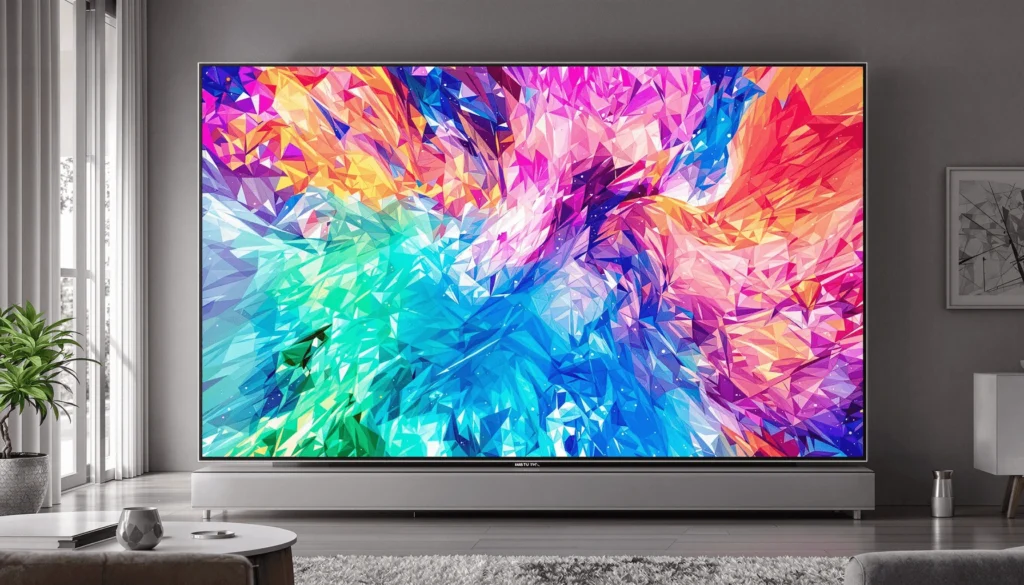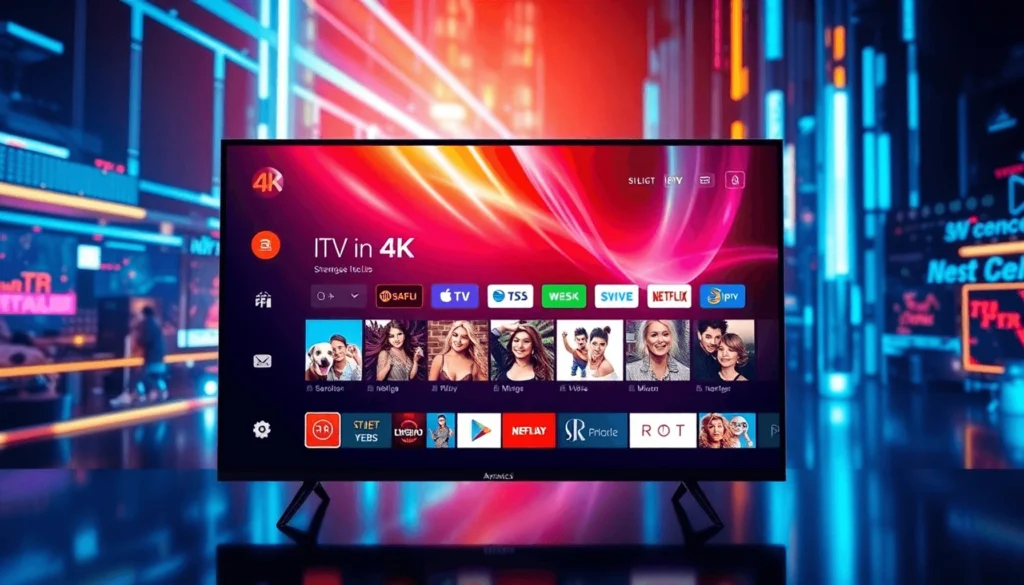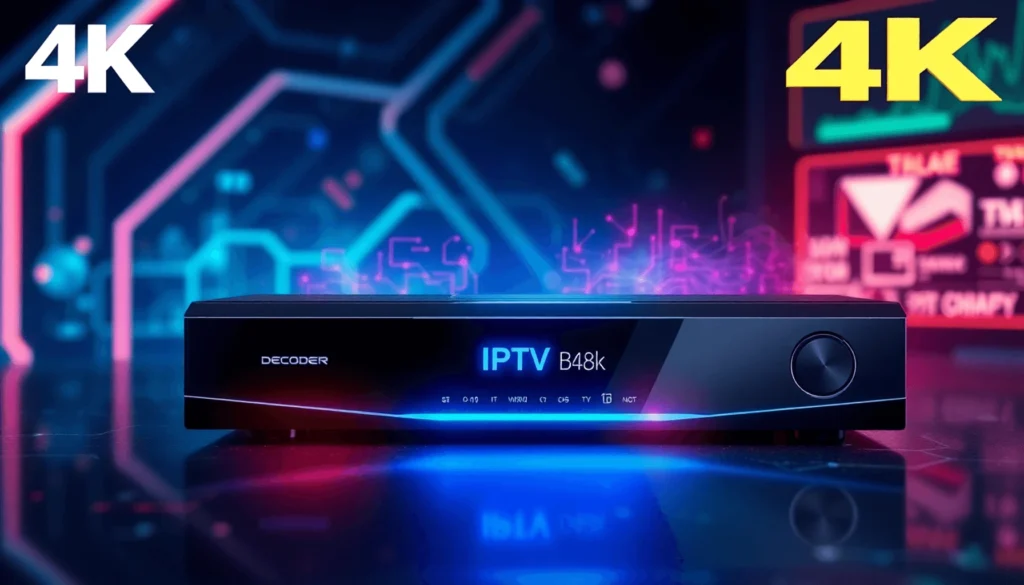
IPTV 4K is a game-changing technology that takes streaming to the next level. With Internet Protocol Television services, you can now enjoy ultra-high-definition content right on your screen. This innovative technology revolutionizes how you watch by delivering content in stunning detail – four times the clarity of standard HD.
Stream Smarter with Affordable Shack TV Plans
Looking for reliable and budget-friendly live TV streaming? Shack TV offers premium channels, sports, movies, and more—starting at just $15.99/month. No contracts, no hidden fees, just endless entertainment.
👉 Compare Shack TV pricing plans and start streaming today!
Why Choose IPTV 4K?
The benefits of 4K resolution are hard to ignore:
- Crystal-clear detail: Every frame displays 8.3 million pixels
- Enhanced color depth: Broader spectrum of colors for lifelike images
- Improved contrast: Sharper distinction between light and dark areas
- Reduced pixelation: Smoother edges and more natural-looking content
The Growing Demand for Ultra-HD IPTV
There’s no denying it – people want better quality entertainment at home. The demand for IPTV services in ultra-HD has skyrocketed in recent years. Viewers now expect cinema-grade quality in their living rooms, which is driving the rapid growth of 4K content libraries.
According to statistics, there has been a staggering 150% increase in 4K IPTV subscriptions since 2020. Major providers are also getting on board by expanding their offerings to include more 4K channels.
Understanding the Impact of 4K Resolution
So what exactly does this mean for you? Well, let’s break it down:
Your typical HD television displays around 2 million pixels. But with IPTV 4K, that number quadruples to an impressive 8 million pixels. This dramatic improvement creates an immersive viewing experience that’s especially noticeable on larger screens.
How Does It Benefit Different Genres?
Certain types of content stand to gain even more from this enhanced clarity:
- Sports broadcasts: Every detail becomes visible – from the players’ expressions to the intricacies of gameplay.
- Nature documentaries: The vibrant colors and fine textures bring wildlife scenes to life like never before.
- Action movies: Fast-paced sequences become smoother and more realistic with reduced pixelation.
With IPTV 4K, you can expect nothing less than breathtaking visuals that transport you into the heart of the action.
Understanding IPTV 4K Technology
What is 4K Resolution?
4K resolution delivers stunning visual clarity through an impressive 3840 x 2160 pixel grid, packing over 8.3 million pixels into your display. This pixel density creates sharp, lifelike images with exceptional detail – imagine being able to see individual blades of grass in a sports broadcast or the subtle textures in a movie scene.
How Does 4K Streaming Work?
The magic behind efficient 4K streaming lies in the H.265 (HEVC) codec. This advanced compression technology:
- Reduces file sizes by up to 50% compared to older H.264 encoding
- Maintains high image quality while consuming less bandwidth
- Enables smoother streaming even on moderate internet connections
- Supports HDR (High Dynamic Range) content for enhanced color depth
Streaming Protocols Used in IPTV
IPTV services utilize specific streaming protocols to deliver 4K content to your devices. Here’s what you need to know about the main protocols:
1. RTMP (Real-Time Messaging Protocol)
- Low-latency streaming ideal for live events
- Built-in encryption for secure content delivery
- Supports adaptive bitrate streaming
2. HLS (HTTP Live Streaming)
- Developed by Apple for reliable streaming
- Breaks content into small, downloadable segments
- Works across multiple devices and platforms
- Automatically adjusts quality based on network conditions
3. M3U8 Format
- Playlist format supporting multiple quality levels
- Compatible with most streaming devices
- Enables seamless switching between resolutions
- Supports both live and on-demand content
These protocols work together with your IPTV service to deliver crystal-clear 4K content. Your streaming experience depends on how these technologies interact with your network connection and playback device. A stable internet connection with at least 25 Mbps download speed ensures optimal 4K streaming quality.
The Benefits of IPTV 4K Technology
The combination of high pixel density, efficient compression, and robust streaming protocols creates the foundation for immersive IPTV viewing. These technical elements work behind the scenes to bring you sharp, detailed content without excessive buffering or quality loss.

Devices Supporting IPTV 4K Streaming
Several powerful devices can handle IPTV 4K content. Here’s what you need to know about the top performers:
1. Nvidia Shield TV Pro
- Dedicated GPU for smooth 4K playback
- AI upscaling technology for non-4K content
- Support for multiple IPTV apps and players
- Direct ethernet connection option
- Handles HDR10 and Dolby Vision
2. Apple TV 4K
- A15 Bionic chip for seamless 4K streaming
- Built-in HEVC hardware decoder
- Support for high frame rate HDR
- Quick frame refresh rate matching
- Thread networking support
3. Smart TVs with Native 4K Support
- LG OLED series with WebOS
- Samsung QLED models with Tizen
- Sony Bravia with Google TV
- Built-in ethernet ports
- Direct app installation capability
Device capabilities vary significantly across different models and brands. The Nvidia Shield TV Pro excels at handling complex IPTV streams with its dedicated graphics processing, while Apple TV 4K shines in ecosystem integration and user interface smoothness.
Hardware specifications play a crucial role in playback quality:
- Processor Speed: Affects menu navigation and stream loading
- RAM Capacity: Determines multitasking ability
- Storage Space: Impacts app installation and caching
- Network Interface: Influences streaming stability
Common playback issues stem from hardware limitations:
- Older devices struggle with high-bitrate 4K streams
- Limited RAM causes app crashes during extended viewing
- Weak processors lead to frame drops
- WiFi-only devices may experience more buffering
- Budget smart TVs often lack proper codec support
Your viewing experience depends heavily on choosing the right device for your setup. Premium devices like Nvidia Shield and Apple TV 4K offer superior performance but come at higher price points. Mid-range smart TVs can handle 4K IPTV adequately when paired with stable internet connections and proper network configuration.
Professional IPTV Decoders for 4K Content
Professional IPTV decoders bring advanced capabilities to handle multiple HD and 4K streams, making them essential tools for commercial applications and power users. These specialized devices pack powerful features that set them apart from consumer-grade equipment.
Key Features of Professional Decoders:
- Multi-stream processing up to 32 simultaneous channels
- Hardware acceleration for smooth 4K playback
- Advanced error correction and packet loss recovery
- Built-in transcoding capabilities
- Real-time stream analysis and monitoring
- Redundant power supplies for 24/7 operation
Professional decoders support a wide range of streaming protocols, including:
- RTMP (Real-Time Messaging Protocol)
- HLS (HTTP Live Streaming)
- MPEG-DASH
- SRT (Secure Reliable Transport)
- UDP/RTP multicast
Benefits for Commercial Users
Professional IPTV decoders serve specific needs in commercial environments:
- Hotels and Hospitality: Distribute multiple 4K channels throughout the property while maintaining consistent quality
- Sports Bars: Display numerous live sports events simultaneously in ultra-HD
- Broadcasting Centers: Process and redistribute multiple streams with minimal latency
- Digital Signage: Power multiple 4K displays with different content streams
These devices offer advanced features like stream backup switching, allowing automatic failover to backup sources if the primary stream encounters issues. Built-in monitoring tools help operators track stream health, bitrates, and network performance in real-time.
Hardware Specifications
Professional decoders typically include:
- Dedicated GPU for hardware-accelerated decoding
- High-speed network interfaces (10GbE)
- Large RAM capacity (16GB+)
- Enterprise-grade storage options
- Multiple video outputs (HDMI 2.0, SDI)
The ability to handle multiple 4K streams requires significant processing power. Professional decoders use specialized chipsets designed for high-performance video processing, delivering superior stability compared to consumer devices.
These systems also feature robust management interfaces, allowing remote configuration and monitoring through web-based dashboards or SNMP protocols. This enables efficient management of large-scale IPTV deployments

Current Challenges Facing IPTV 4K Adoption
The path to seamless 4K IPTV streaming faces several significant hurdles that affect both providers and users. Let’s examine the key challenges that impact the widespread adoption of 4K IPTV services.
1. Bandwidth Requirements
- 4K streams demand 25-50 Mbps of consistent bandwidth
- Peak usage hours can strain network capacity
- Rural areas often lack sufficient internet infrastructure
- Multiple 4K streams can overwhelm home networks
2. Device Compatibility Issues
- Older smart TVs lack proper 4K HEVC decoding
- Some devices advertise “4K ready” but struggle with high bitrates
- Inconsistent HDR format support across devices
- Limited processing power in budget devices causes frame drops
3. Quality and Performance Challenges
Network-Related Issues:
- Packet loss during peak hours
- Variable bitrate handling
- Network congestion affecting stream stability
- ISP throttling of high-bandwidth connections
Hardware Limitations:
- CPU/GPU bottlenecks during playback
- Memory constraints on cheaper devices
- Thermal throttling during extended viewing
- Storage speed limitations affecting buffer management
4. Real-World Impact on Users
- Constant buffering interrupts viewing experience
- Picture quality degradation during high-action scenes
- Audio sync issues during network fluctuations
- Reduced resolution auto-switching disrupts immersion
The technical demands of 4K IPTV create a complex ecosystem where network infrastructure, device capabilities, and service quality must align perfectly for optimal performance. Internet Service Providers play a crucial role in this equation, as their network management policies directly impact streaming quality. Users in shared living environments face additional challenges when multiple household members attempt to stream 4K content simultaneously.
These challenges highlight the need for robust solutions in both hardware development and network infrastructure. The growing demand for 4K content pushes the boundaries of current technology, requiring continuous innovation in compression algorithms and streaming protocols.
Future Predictions for IPTV 4K
The future of IPTV 4K promises groundbreaking advancements that will revolutionize streaming experiences. Advanced compression algorithms like AV1 and VVC (Versatile Video Coding) are set to reduce bandwidth requirements by up to 50% compared to current H.265 standards, making 4K streaming more accessible to users with limited internet speeds.
Next-Generation Hardware Integration
- Smart TVs with built-in AI processors optimizing real-time video quality
- Advanced System-on-Chip (SoC) designs supporting multiple 4K streams
- Dedicated streaming devices with enhanced processing capabilities
- Cross-platform compatibility improvements across Android, iOS, and custom operating systems
Enhanced HDR Technology
- Integration of Dolby Vision IQ and HDR10+ Adaptive
- Dynamic metadata adjustments based on ambient lighting conditions
- Wider color gamut support for more vivid and accurate picture quality
- Advanced tone mapping for improved contrast in bright and dark scenes
The rise of 5G networks will enable mobile 4K IPTV streaming with minimal latency. You’ll experience buffer-free playback on smartphones and tablets, with adaptive bitrate streaming automatically optimizing quality based on network conditions.
Artificial Intelligence Integration
- AI-powered upscaling of lower resolution content to near-4K quality
- Smart content delivery networks (CDN) predicting viewing patterns
- Automated quality optimization based on device capabilities
- Real-time network congestion management
Cloud-based processing will reduce the hardware requirements for end-user devices. This advancement means more affordable devices will capably handle 4K IPTV streams, expanding the technology’s accessibility to a broader audience.
Quality of Experience Improvements
- Sub-second stream start times
- Instant channel switching capabilities
- Reduced artifacts during high-motion scenes
- Seamless resolution scaling during network fluctuations
These technological improvements will create a viewing experience that rivals traditional broadcast quality while maintaining the flexibility and convenience of IPTV services.
Expanding Content Libraries and On-Demand Services in 4K
Growth of 4K Content on IPTV Channels
IPTV channel libraries are experiencing unprecedented growth in 4K content offerings. Major providers now host extensive collections of ultra-HD channels, ranging from sports and entertainment to documentaries and live events. These native 4K resolution channels deliver crystal-clear picture quality that brings content to life with stunning detail.
Transformation of Video-On-Demand Landscape
The video-on-demand landscape has transformed dramatically, with providers building vast libraries of 4K content:
- Premium Movies: Latest blockbusters and classic films remastered in 4K
- Original Series: Platform-exclusive shows filmed and streamed in ultra-HD
- Sports Archives: Historical matches and highlights upgraded to 4K quality
- Documentary Collections: Nature and science content showcasing 4K’s visual prowess
Impact of Consumer Viewing Habits on IPTV 4K Content Libraries
Consumer viewing habits shape the evolution of IPTV 4K content libraries. Research indicates:
- 73% of viewers prefer 4K quality when available
- Demand for ultra-HD sports content has risen by 156% since 2021
- Documentary viewers spend 45% more time watching in 4K versus standard HD
How IPTV Providers Are Responding to Trends
IPTV providers respond to these trends by:
- Expanding Regional Content: Local programming in native 4K resolution
- Live Event Coverage: Real-time streaming of concerts, sports, and cultural events
- Interactive Features: 4K-optimized program guides and content recommendations
- Specialized Channels: Dedicated 4K channels for specific genres or interests
Competition Among IPTV Services Due to Increased 4K Content Creation
The surge in 4K content creation has sparked competition among IPTV services. Providers now differentiate themselves through:
- Exclusive 4K broadcasting rights
- Premium ultra-HD packages
- Enhanced streaming quality
- Specialized content categories
This competitive environment benefits viewers through improved content selection and quality. IPTV platforms continuously update their 4K libraries, adding fresh content weekly and upgrading existing shows to ultra-HD resolution. The growing availability of 4K cameras and production equipment ensures a steady stream of new native ultra-HD content for these expanding libraries.
Tips for Optimizing Your IPTV 4K Experience
Your network setup plays a crucial role in achieving the best possible 4K IPTV streaming experience. Here’s how to optimize your setup for maximum performance:
Network Configuration
- Use a wired Ethernet connection instead of Wi-Fi for stable streaming
- Position your router close to your streaming device if Wi-Fi is necessary
- Ensure your internet connection provides at least 25 Mbps for single 4K stream
- Consider a dedicated line for streaming to avoid bandwidth competition
Device Selection Guidelines
- Choose devices with dedicated 4K video processors
- Look for hardware supporting H.265/HEVC decoding
- Select devices with sufficient RAM (minimum 2GB) for smooth operation
- Verify the device has HDMI 2.0 or higher ports
Quality Enhancement Settings
- Enable hardware acceleration in your IPTV app
- Set buffer size to at least 5 seconds for stable playback
- Adjust video output to match your TV’s native resolution
- Use direct play instead of transcoding when possible
Network Testing and Maintenance
- Run speed tests during peak usage hours
- Monitor your router’s performance regularly
- Clear cache files periodically
- Update firmware on all streaming devices
Advanced Optimization Tips
- Set up Quality of Service (QoS) rules on your router
- Create a separate VLAN for streaming traffic
- Use a VPN with split tunneling to optimize streaming speeds
- Consider a managed switch for better network control
Picture Quality Settings
- Enable HDR when available
- Adjust color space settings to match your display
- Fine-tune motion handling settings
- Calibrate brightness and contrast for optimal viewing
Remember to test different configurations to find what works best with your specific setup and internet service provider. Regular maintenance of your streaming environment helps prevent potential issues before they impact your viewing experience.
Conclusion
IPTV 4K streaming represents a significant leap forward in home entertainment quality. The technology continues to evolve, bringing crystal-clear visuals and immersive viewing experiences directly to your screen. Your success with IPTV 4K depends on implementing the right combination of hardware, network setup, and optimization techniques.
The path to perfect 4K streaming starts with these essential elements:
- Strong Network Infrastructure – A robust internet connection forms the backbone of your IPTV 4K experience
- Compatible Devices – High-quality streaming devices capable of handling 4K content ensure smooth playback
- Optimized Settings – Fine-tuned configurations maximize your viewing quality
The future of IPTV 4K looks promising, with providers continuously expanding their 4K content libraries and improving streaming technologies. You’ll see enhanced compression methods, reduced bandwidth requirements, and better device compatibility in the coming years.
Your role in this evolution matters. By adopting recommended practices and staying informed about technological advancements, you actively contribute to the growing IPTV 4K ecosystem. Each optimization step you take – from upgrading your network to selecting the right streaming device – brings you closer to the ultimate viewing experience.
Remember these key takeaways:
- Prioritize wired connections when possible
- Invest in quality streaming devices
- Regular maintenance of your setup
- Stay updated with the latest IPTV developments
The world of IPTV 4K streaming opens doors to unprecedented entertainment possibilities. Your viewing experience will transform as you implement these optimization strategies and embrace new technological developments. The future of television isn’t just about watching content – it’s about experiencing it in the highest possible quality.
Take action today to enhance your IPTV 4K setup. Start with one improvement at a time, measure the results, and build upon your success. The perfect balance of hardware, settings, and network optimization awaits you, ready to deliver the crystal-clear, buffer-free entertainment experience you deserve.
FAQs (Frequently Asked Questions)
What is IPTV 4K and why is it significant?
IPTV 4K refers to Internet Protocol Television streaming content in ultra-high-definition 4K resolution. It offers four times the pixel density of standard HD, providing sharper and more detailed images. The significance lies in delivering superior picture quality and an enhanced viewing experience, meeting the growing demand for ultra-HD IPTV services.
How does H.265 HEVC compression improve 4K IPTV streaming?
H.265, also known as HEVC (High-Efficiency Video Coding), is a codec that efficiently compresses 4K video streams without compromising quality. This compression reduces bandwidth requirements, enabling smoother IPTV 4K streaming over networks by minimizing buffering and playback interruptions.
Which devices support IPTV 4K streaming effectively?
Popular devices supporting IPTV 4K include Nvidia Shield, Apple TV 4K, and various smart TVs equipped with compatible hardware. Device capabilities such as processing power and network connectivity influence playback quality, with high-end devices providing better performance and fewer buffering issues.
What are the main challenges facing widespread adoption of IPTV 4K?
Key challenges include high bandwidth requirements necessary for smooth 4K streaming, device compatibility issues across different hardware platforms, and streaming quality problems like buffering or choppy playback. These factors can impact user satisfaction and limit broader IPTV 4K adoption.
How can users optimize their IPTV 4K streaming experience?
To optimize IPTV 4K streaming, users should ensure a stable high-bandwidth internet connection—preferably wired Ethernet over Wi-Fi—select devices optimized for smooth 4K playback, and adjust streaming settings to reduce buffering. Implementing these best practices enhances picture quality and overall viewing enjoyment.
What future advancements are expected in IPTV 4K technology?
Future predictions for IPTV 4K include improved compression techniques reducing bandwidth consumption, expanded device compatibility across more hardware platforms, enhanced user experience through smoother playback, and advanced HDR support for richer color and contrast in ultra-HD content.

One Response